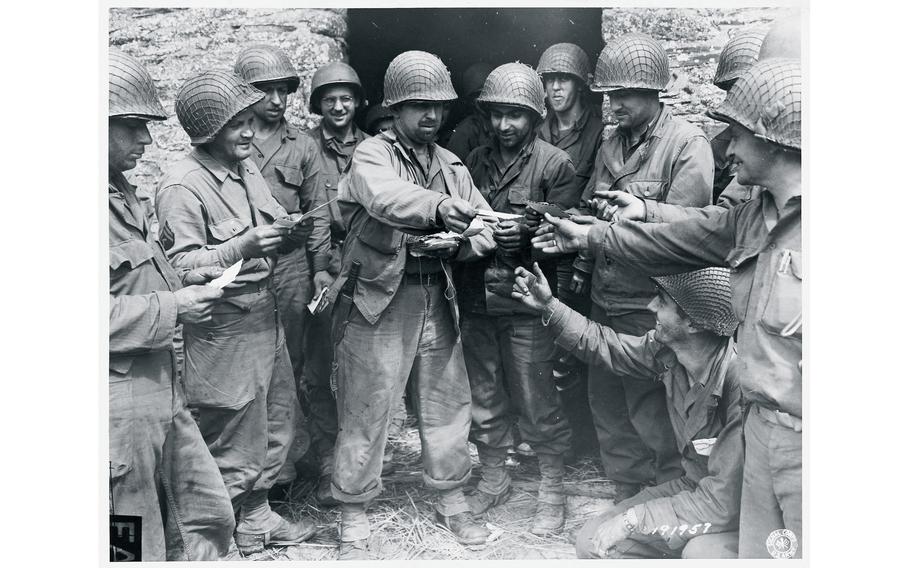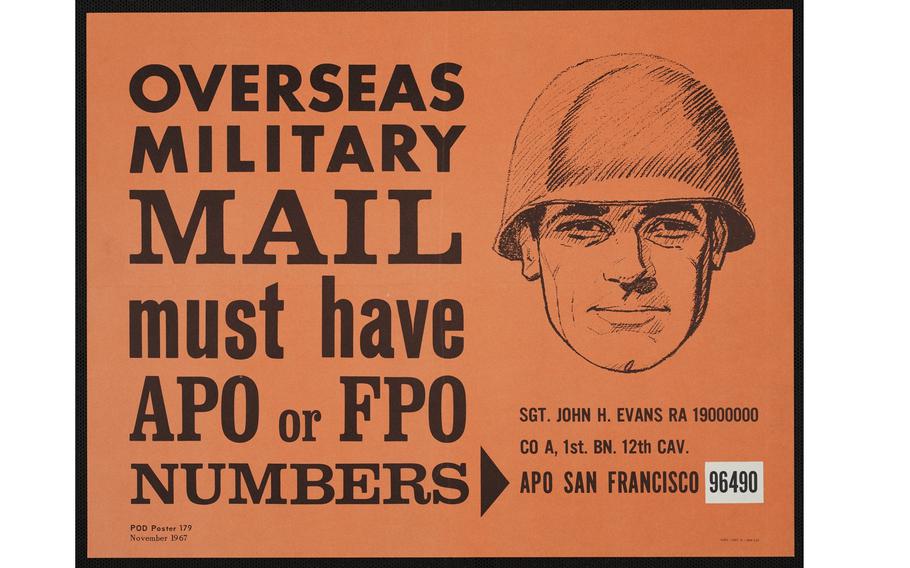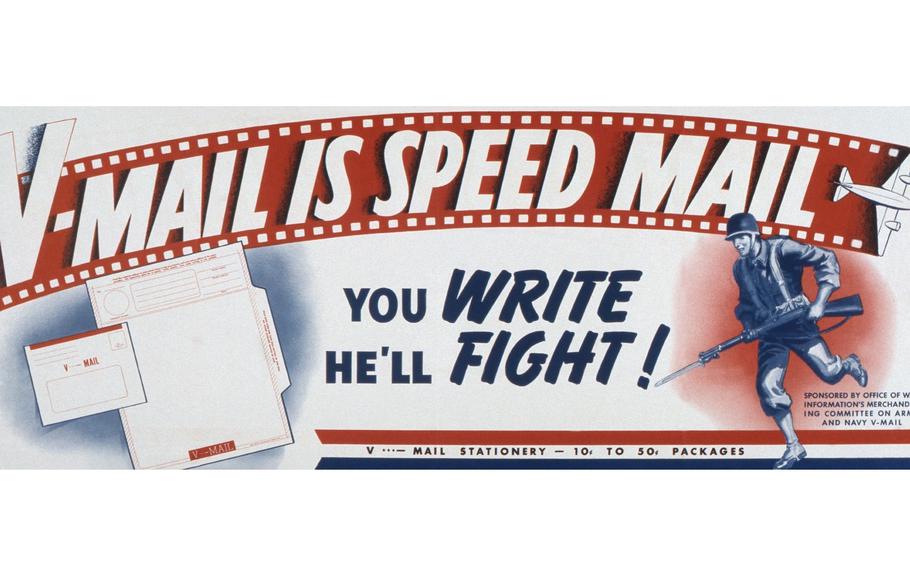
Mail Call for soldiers in Europe during World War II. (Library of Congress)
For 250 years, wherever the U.S. military has gone, the United States Postal Service has followed — serving as a vital link between the front lines and the home front.
As the Navy, Army and Marine Corps celebrate their 250th anniversaries this year, the USPS marked the same milestone last month — reflecting a shared legacy of service and history.
“Ever since George Washington and Benjamin Franklin were appointed to lead the Army and the post office, we’ve had a partnership built on service to the American people,” USPS historian Steve Kochersperger told Stars and Stripes.
In May, the USPS released three new commemorative stamps this year for the birthdays of the Navy, Army and Marine Corps as a tribute to honor their service, sacrifice and dedication to the country.
“Two hundred and fifty years is a remarkable achievement,” Kochersperger said. He added that he hopes to see the USPS continue its relationship with the military in the future.
“To get a handwritten card or letter that was in the hands of your loved one just a few days before, maybe it even has a smear of lipstick or a scent of their perfume … no email can do that.”
— USPS historian Steve Kochersperger
Partnering to keep troops connected to home
The USPS was established by the Second Continental Congress on July 26, 1775, during the American Revolutionary War to facilitate communication among the military and 13 American colonies. Benjamin Franklin was appointed as the first Postmaster General and oversaw civilian and military mail routes until Nov. 7, 1776.
Wartime forced many advances in the way mail was handled and delivered to troops, Kochersperger said. During the American Civil War, the postal service introduced several improvements that made it easier for troops to send and receive mail.
Troops who were unable to afford or obtain stamps were allowed to send letters for free, with the recipient being responsible for paying the postage upon delivery. Kochersperger said other improvements included the issuance of postal money orders to securely and safely mail money, voting by mail for the first time and the construction of railway post offices as a new way of sorting mail in transit.
“We can see some of the most tangible improvements with hundreds of thousands of soldiers deployed,” Kochersperger said. “Nationwide, the post office department and the Army worked together to keep them [troops] in touch with the home front.”
The Military Postal Express Service was created by the Army during World War I, and it served as the first postal system to handle military mail in Europe. The MPES established the first Army Post Offices (APOs) in France.

The United States Post Office Department issued posters to remind Americans that APO and FPO addresses always need a ZIP code. (USPS)
APO and Fleet Post Offices (FPOs) are still used to distribute mail to military personnel serving overseas.
Kochersperger said the USPS hands off mail to the Military Postal Service Agency — created in 1980 to consolidate the postal operations of the military — to deliver across more than 85 countries.
During World War I, the Post Office Department — predecessor of the USPS — dispatched 35 million letters to the American Expeditionary Forces, according to the National Postal Museum. Postcards were a popular way service members communicated with family and friends during the war.
“To get a handwritten card or letter that was in the hands of your loved one just a few days before, maybe it even has a smear of lipstick or a scent of their perfume … no email can do that,” Kochersperger said.
During World War II, Kochersperger said that “a tremendous amount” of mail was going back and forth between service members and those back home. The Navy Post Office alone processed 8 million pieces of mail in 1945 which led to an increased number of post offices from 891 in 1941 to 4,632 in 1945, according to the National Postal Museum.
With the high volume of mail being transported on aircraft alongside weapons and supplies, the postal service and the Army were looking for ways to lighten the cargo load, Kochersperger said, leading to the development of V-Mail, or Victory Mail, on June 15, 1942, which was when images of letters were copied onto 16mm microfilm.

In 1942, the United States Post Office Department began V-Mail service. “V was for Victory”. Letters to and from the troops were microfilmed then printed out for the recipient. This saved space and weight during transit. (USPS)
“The 145-pound canister of microfilm replaced what would have been over 2,500 paper mail,” Kochersperger said, adding that about 1 billion V-Mails were sent during World War II.
“There was no greater joy, no greater comfort than getting a letter from home,” Kochersperger said. “The effect on morale was well understood by the [military] command as well as the postal service.”
Delivering mail to troops is the mission
Kochersperger said that, throughout history, the USPS has continued to deliver “as the needs of the nation have changed, and as the nation grew,” connecting service members, families and American citizens from different parts of the world.
As the USPS developed its relationship with the military over time, their commitment to service members remains constant.
“It is our mission to get that mail to them [troops], no matter where they are,” Kochersperger said.